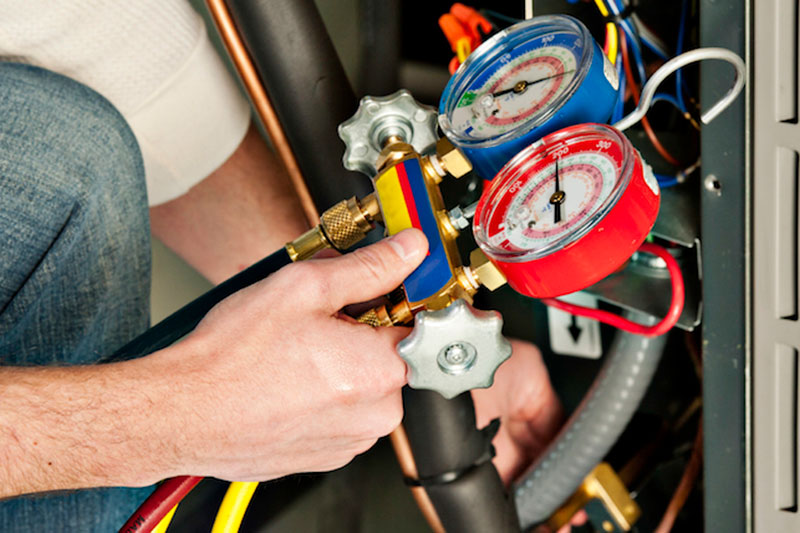
You might not think a lot about how your air conditioner functions, but it requires refrigerant to keep your residence cold. This refrigerant is bound by environmental rules, because of the chemicals it contains.
Subject to when your air conditioner was added to your home, it may need R-22, R-410A or R-32 refrigerant. We’ll review the differences and which air conditioner refrigerants are being phased out in Newark, as well as how these phaseouts affect you.
What’s R-22 and Why Is It Phased Out?
If your air conditioner was added before 2010, it likely has Freon®. You can discover if your air conditioner contains it by calling us at 740-344-5497. You can also look at the name plate on your air conditioner condenser, which is located outside your house. This sticker will include details on what kind of refrigerant your AC needs.
Freon, which is also called R-22, has chlorine. Scientists consider Freon to be harmful to the earth’s ozone layer and one that contributes to global warming. The Environmental Protection Agency, which governs refrigerants in the United States, outlawed its manufacture and import in January 2020.
Should I Replace My R-22 Air Conditioner?
It depends. If your air conditioning is cooling fine, you can continue to use it. With yearly air conditioner maintenance, you can expect your air conditioning to work around 15–20 years. However, the Department of Energy reports that removing a 10-year-old air conditioner could save you 20–40% on yearly cooling expenses!
If you don’t get a new air conditioner, it might lead to a problem if you have to have air conditioning repair down the road, specifically for refrigerant. Repairs may be higher-priced, because only small amounts of recycled and reclaimed R-22 is on hand.
With the end of R-22, a lot of new air conditioners now have Puron®. Also known as R-410A, this refrigerant was made to keep the ozone layer healthy. As it calls for an incompatible pressure level, it isn’t compatible with air conditioners that use R-22 for cooling.
However, Puron still has the likelihood to contribute to global warming. As a result, it might also ultimately be discontinued. Although it hasn’t been disclosed yet for residential air conditioners, it’s likely sometime this decade.
What Refrigerant Will Take the Place of R-410A?
In preparation of the discontinuation, some manufacturers have begun using R-32 in new air conditioners. This refrigerant rates low for global warming potential—around one-third less than R-410A. And it also decreases energy expenditure by about 10%, according to the Intergovernmental Panel on Climate Change’s Fourth Assessment Report. That’s savings that could be sent on to you through your utility expenses.
Luikart Heating & Cooling Can Provide Support with All Your Air Conditioning Needs
In short, the modifications to air conditioner refrigerant probably won’t impact you a whole lot until you have to have repairs. But as we talked about beforehand, refrigerant-related repairs may be more costly since there are the restricted amounts on hand.
Aside from that, your air conditioner usually malfunctions at the worst time, often on the hottest day when we’re receiving many other calls for AC repair.
If your air conditioner requires an outdated refrigerant or is more than 15 years old, we recommend installing an up-to-date, energy-efficient air conditioner. This provides a hassle-free summer and could even reduce your cooling expenses, especially if you choose an ENERGY STAR®-rated system. Plus, Luikart Heating & Cooling provides many financing solutions to make your new air conditioner fit your budget. Contact us at 740-344-5497 to start today with a free estimate.
